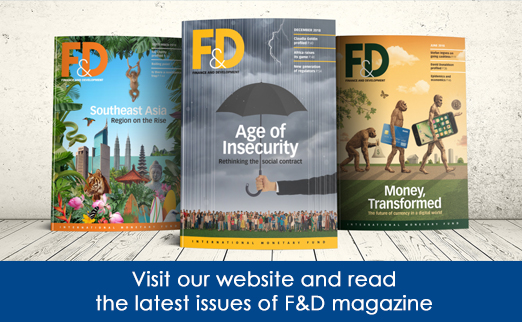Potongan cerita pendek - kelas kosong masa SMA yang mengingatkanku pada dirinya
Recent newsCerita ini fiksi belaka, kemiripan dengan kejadian sesungguhnya hanyalah kebetulan, atau dirimu memang ingin membuatnya kebetulan 😅
read more(Comments)

In short cut, its a policy to accept the influx and outflux of capital from foreign market. The scale of openness determine on how long and how difficulty in moving the capital from outside the country.
The more clear explanation will be displayed by the article from Kose below
FINANCE & DEVELOPMENT
M. Ayhan Kose and Eswar Prasad
There are both benefits and costs to easing restrictions on capital that flows across a country’s borders

Easy come, easy go (photo: Don Mason/Corbis)
What accounts for the surge of cross-border capital flows over the past two and a half decades? Capital account liberalization—that is, easing restrictions on capital flows across a country’s borders—provides a big part of the answer. But while the increase in these flows since the mid-1980s—both between industrial countries and from industrial to developing countries—has been associated with a number of benefits, it has also played a role in a number of financial crises.
This raises some fundamental questions. Why have many developing countries followed the advanced economies and signed on to capital account liberalization despite the risks? Is easing the flow of capital among countries really the villain that some opposed to globalization have made it out to be?

The capital account in a country’s balance of payments covers a variety of financial flows—mainly foreign direct investment (FDI), portfolio flows (including investment in equities), and bank borrowing—which have in common the acquisition of assets in one country by residents of another. It is possible, in principle, to control these flows by placing restrictions on flows going through official channels.
Capital account liberalization presumably results in a higher degree of financial integration of that country with the global economy through higher volumes of capital inflows and outflows.
There is, however, a significant difference between financial integration in theory and in practice. Some countries—for example, in Latin America during the 1970s and 1980s— found it difficult to contain capital outflows in times of economic distress despite apparently pervasive controls. In contrast, many developing countries, including a few in Africa, have no significant controls but have experienced only minimal inflows.
This also points to the difficulty of measuring capital controls and, by extension, the degree of capital account liberalization undertaken. The IMF (which has jurisdiction over current account, but not capital account, restrictions) maintains a detailed compilation of member countries’ capital account restrictions. But even these provide, at best, rough indications because they do not measure the intensity or effectiveness of capital controls.
Controls on capital account transactions represent a country’s attempt to shield itself from risks associated with fluctuations in international capital flows. Capital controls take on special significance in the context of a fixed exchange rate regime. Maintaining such a regime can be made more difficult by unfettered capital flows. This is one reason why even industrial countries had relatively closed capital accounts under the Bretton Woods system of fixed exchange rates, which operated from the end of World War II until 1973.
There could, of course, be various other reasons for maintaining controls, on either inflows or outflows. In a country with a fragile banking system, for instance, allowing households to invest abroad freely could precipitate an exodus of domestic savings and jeopardize the banking system’s viability. And short-term capital inflows can be quickly reversed when a country is hit with an adverse macroeconomic shock, thereby amplifying its macroeconomic effect.
Some developing countries also use capital controls to steer the composition of inflows toward more stable forms, such as FDI. Countries favor FDI, among other reasons, because it usually involves flows that are relatively long term and not subject to rapid reversals associated with changes in investor sentiment—as are, say, stocks and bonds. Some countries have also used selective capital controls to try to induce a shift from shorter- to longer-term inflows—in Chile’s case, by imposing an implicit tax on capital inflows reversed within less than a year.
In theory, capital account liberalization should allow for more efficient global allocation of capital, from capital-rich industrial countries to capital-poor developing economies. This should have widespread benefits—by providing a higher rate of return on people’s savings in industrial countries and by increasing growth, employment opportunities, and living standards in developing countries.
Access to capital markets should allow countries to “insure” themselves to some extent against fluctuations in their national incomes such that national consumption levels are relatively less volatile. Since good and bad times often are not synchronized across countries, capital flows can, to some extent, offset volatility in countries’ own national incomes.
Capital account liberalization may also be interpreted as signaling a country’s commitment to good economic policies. For a country with an open capital account, a perceived deterioration in its policy environment could be punished by domestic and foreign investors, who could suddenly take capital out of the country. This provides a strong incentive for policymakers to adopt and maintain sound policies, with obvious benefits in terms of long-term growth. Inflows stemming from liberalization should also facilitate the transfer of foreign technological and managerial know-how and encourage competition and financial development, thereby promoting growth.
The evidence is not quite as compelling as the theory, however. While emerging market countries that have liberalized their capital accounts typically have had higher growth rates, on average, than those that have not, this association does not imply a causal relationship. Statistical analysis suggests that, after controlling for the effects of other factors, the causal effect of capital account liberalization on growth has been weak, at best.
There is also some evidence that emerging market countries have not been able to use international financial markets effectively to reduce consumption volatility. In fact, the financial crises that have occurred in these economies have been associated with sharp falls in both income and consumption. And there appears to be a significant procyclical element to international capital market access for such countries. International investors are willing to lend to them in good times but tend to pull back in bad times, thereby amplifying swings in the domestic macroeconomy.
Is liberalization worth the risk? The answer, as with most such things, is that it depends. Capital account liberalization clearly is not an unqualified blessing and poses major risks if implemented in unfavorable circumstances—particularly without supporting policies.
Opening the capital account while maintaining a fixed exchange rate regime, especially when domestic macroeconomic policies are not consistent with the requirements of the regime, has been followed by crisis in many countries. Countries that have maintained or only gradually eased capital controls while moving toward a more flexible exchange rate regime generally seem to have had better outcomes.
Weak macroeconomic fundamentals can also pose a problem. For instance, capital account liberalization can aggravate risks associated with imprudent fiscal policies by providing access to excessive external borrowing. Premature opening of the capital account also poses serious risks when financial regulation and supervision are inadequate. In the presence of weakly regulated banking systems and other distortions in domestic capital markets, foreign capital inflows could be misallocated and create a host of problems.
While the evidence suggests that transitional risks are associated with opening the capital account, resisting liberalization over an extended period may prove futile and counterproductive. As the forces of globalization advance, it becomes harder for countries to maintain closed capital accounts. Increasing openness to international trade expands opportunities for the avoidance of capital account restrictions through under- and overinvoicing of trade transactions. And the increasing sophistication of investors and global financial markets makes it much easier.
One possible strategy is to accept the risks and move forward while controlling the risks as much as possible. History and international experience provide a guide. Sound domestic policies and institutions, a regulatory framework promoting a strong and efficient financial sector, and effective systems and procedures for monitoring capital flows greatly improve the chances of ensuring that such flows foster sustainable growth.
Notably, the benefits of capital account openness in terms of higher growth and lower volatility seem to be most evident for industrial economies, which also typically have the most open capital accounts. Counterintuitive as it may seem, the relatively more positive experiences of industrial countries therefore suggest that, for developing economies, more—not less—financial integration is the answer. But only if it is done the right way. Perhaps most notably, in all the advanced economies and many other countries, open capital accounts are now taken for granted: no country that has liberalized its capital account in recent decades has reversed the process other than temporarily.
Cerita ini fiksi belaka, kemiripan dengan kejadian sesungguhnya hanyalah kebetulan, atau dirimu memang ingin membuatnya kebetulan 😅
read moreDalam konteks formulir C Plano pada Pilkada, singkatan “KWK” berarti “Kepala Wilayah Kerja”. Formulir C1-KWK Plano adalah catatan hasil penghitungan suara di Tempat Pemungutan Suara (TPS) yang digunakan dalam Pemilihan Kepala Daerah dan Wakil Kepala Daerah. Formulir ini mencatat secara rinci perolehan suara di setiap TPS dan merupakan bagian penting dalam proses rekapitulasi suara.
read moreThe **Department of Government Efficiency (DOGE)** is a proposed initiative by President-elect Donald Trump, aiming to streamline federal operations and reduce wasteful spending. Announced on November 12, 2024, the department is set to be co-led by tech entrepreneur Elon Musk and former Republican presidential candidate Vivek Ramaswamy.
read moreKyle Singler is a former professional basketball player known for his collegiate success at Duke University and his tenure in the NBA.
read morePete Hegseth is an American television host, author, and Army National Guard officer, recently nominated by President-elect Donald Trump to serve as the United States Secretary of Defense.
read moreAnne Applebaum is a renowned journalist, historian, and author whose works delve into some of the most pressing and complex topics of the modern era. Her expertise lies in examining the intricacies of authoritarian regimes, the rise of populism, and the fragility of democratic institutions. Her Pulitzer Prize-winning book, "Gulag: A History," offers an in-depth exploration of the Soviet labor camp system, shedding light on the human suffering and ideological underpinnings of one of the 20th century’s most oppressive systems.
read morePlexity AI is a marvel of our times—a confluence of technological ingenuity and the boundless hunger for understanding. At its core, Plexity AI represents an advanced synthesis of artificial intelligence and machine learning, built not merely to mimic thought but to empower it. Unlike earlier iterations of AI, which focused on specialized tasks or data crunching, Plexity seems designed to operate as an expansive intellectual partner, capable of untangling the Gordian knots of complexity that define the modern era.
read more
Collaboratively administrate empowered markets via plug-and-play networks. Dynamically procrastinate B2C users after installed base benefits. Dramatically visualize customer directed convergence without
Comments